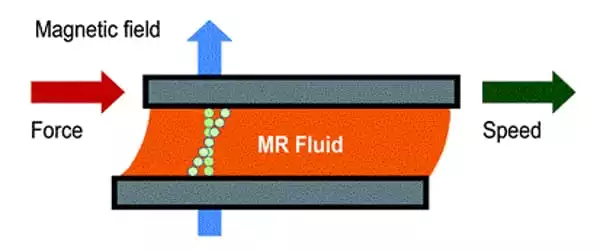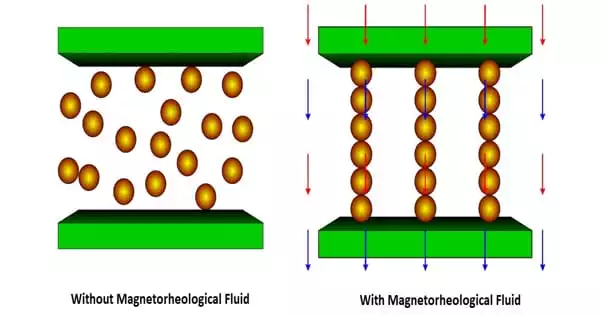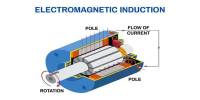A magnetorheological fluid (MR fluid, or MRF) is a smart fluid in a carrier fluid, typically oil. These are smart materials because they have the unique ability to change their viscosity and yield stress in response to a magnetic field as well as external operating power. When exposed to a magnetic field, the fluid’s apparent viscosity increases dramatically, to the point where it becomes a viscoelastic solid. These fluids are made up of soft, spherical, magnetic particles dispersed in an organic liquid with diameters ranging from 0.01 to 20 m.
Magnetorheological fluids are a type of smart material in which the yield stress increases significantly when an external magnetic field is applied. Importantly, the yield stress of the fluid in its active (“on”) state can be precisely controlled by varying the intensity of the magnetic field. Magnetorheological effect and sedimentation stability are two important factors that contribute to the performance of an MR fluid. As a result, the fluid’s ability to transmit force can be controlled with an electromagnet, opening up a plethora of control-based applications.
Magnetorheological fluid is one with strong magnetic properties. When a magnetic field is applied to MR fluid, it responds by changing its properties. MR fluids are used in a variety of applications, including MR dampers, brakes, clutches, and MR valves. The working principles of MR fluid flow rheological behavior are based on an infinite chain of particles aligned with the magnetic field direction (H). That is the case when a magnetic field is applied to a gap between two plates.

MR fluid is not the same as a ferrofluid, which has smaller particles. The particles in MR fluid are mostly on the micrometer scale and are too dense for Brownian motion to keep them suspended (in the lower density carrier fluid). The majority of experimental studies focus on the synthesis of MR fluids with high yield stress and enhanced sedimentation stability. Under normal conditions, ferrofluid particles are primarily nanoparticles suspended by Brownian motion and will not settle. As a result, these two fluids serve very different purposes.
The unique ability of these fluids to change the flow behavior under the action of an externally applied magnetic field, in a reversible mode and with a reaction time of a few milliseconds, is attracting the attention of the research and industrial worlds. As a result, MRFs are regarded as a distinct class of smart materials. Traditional devices may be replaced in the future by MRFs-based devices, with the most important principle to consider when designing new devices utilizing innovative technologies: sustainability. This means that, in the absence of an external magnetic field, the MRF behaves like a free-flowing liquid; however, when the magnetic field is applied, it behaves like a semi-solid material that can contrast a defined level of force before resuming flow.
















